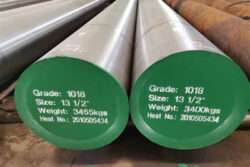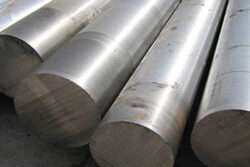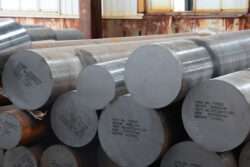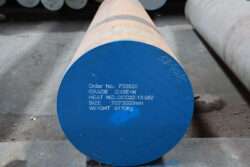Introducción
Heat treatment is a critical process in enhancing the properties of steel, particularly for materials like 1045 steel. Known for its balance of strength and ductility, 1045 steel is widely used in various industries for applications such as shafts, gears, and machinery components. The heat treatment of 1045 steel plays a crucial role in optimizing its performance by improving hardness, wear resistance, and tensile strength. This comprehensive guide will explore the different methods of 1045 steel heat treatment, the benefits of each process, and the key considerations to ensure the best results.
Comprender Acero 1045
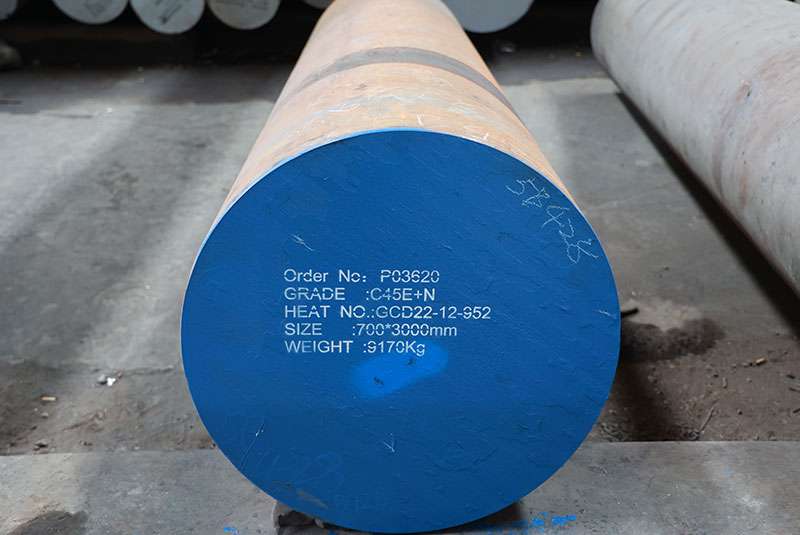
1045 steel is a medium carbon steel with approximately 0.45% carbon content. It is widely favored for its good machinability, moderate strength, and excellent impact resistance. Before diving into the specifics of heat treatment, it is essential to understand the basic properties of 1045 steel and how they are affected by the heat treatment process.
Key Properties of 1045 Steel
1045 steel offers a balance of hardness and strength, making it suitable for a variety of applications. Its chemical composition includes iron, carbon, manganese, and trace amounts of sulfur and phosphorus. These elements contribute to its overall toughness and machinability.
Applications of 1045 Steel
- Shafts and axles: Due to its good strength-to-weight ratio and impact resistance.
- Gears and sprockets: Because of its toughness and wear resistance.
- Componentes de la máquina: For general engineering use due to its balanced properties.
Why 1045 Steel Heat Treatment Is Essential
Heat treatment alters the microstructure of 1045 steel, improving its mechanical properties such as hardness, strength, and toughness. Without heat treatment, 1045 steel may not perform optimally in demanding applications, where resistance to wear and fatigue is critical.
Tipos de Acero 1045 Tratamiento térmico
Several heat treatment methods can be applied to 1045 steel, each serving a specific purpose and delivering unique benefits. The following sections will cover the most common types of 1045 steel heat treatment, how they work, and the outcomes they produce.
Annealing 1045 Steel
Annealing is a heat treatment process that softens steel, making it more ductile and easier to machine. For 1045 steel, the annealing process involves heating the steel to a temperature of around 760°C to 870°C (1400°F to 1600°F) and then slowly cooling it in a furnace.
Benefits of Annealing 1045 Steel
- Improved machinability: Annealing softens the steel, making it easier to cut and shape during machining processes.
- Reduced internal stresses: The slow cooling process helps reduce residual stresses in the steel, which can lead to improved dimensional stability.
- Enhanced ductility: Annealed 1045 steel is more malleable, making it easier to form into complex shapes.
Normalizing 1045 Steel
Normalizing is another heat treatment method that involves heating 1045 steel to a temperature of about 870°C to 925°C (1600°F to 1700°F) and then cooling it in air. The primary purpose of normalizing is to refine the grain structure and improve the toughness of the steel.
Benefits of Normalizing 1045 Steel
- Increased toughness: The grain refinement that occurs during normalizing leads to improved toughness, making the steel more resistant to impact and fatigue.
- Uniform structure: Normalizing creates a more uniform microstructure, enhancing the overall mechanical properties of 1045 steel.
- Better machinability: Normalized steel is easier to machine than untreated steel, similar to annealed steel.
Quenching and Tempering 1045 Steel
Quenching and tempering is a two-step heat treatment process that significantly increases the hardness and strength of 1045 steel. In the quenching phase, the steel is heated to around 845°C to 870°C (1550°F to 1600°F) and then rapidly cooled in water or oil. This is followed by tempering, where the steel is reheated to a lower temperature (400°C to 650°C or 750°F to 1200°F) to reduce brittleness while maintaining hardness.
Benefits of Quenching and Tempering 1045 Steel
- Increased hardness: Quenching transforms the steel’s microstructure, greatly increasing its hardness and wear resistance.
- Improved strength: The quenching process also enhances the tensile strength of 1045 steel, making it suitable for heavy-duty applications.
- Reduced brittleness: Tempering restores some of the steel’s toughness, preventing it from becoming too brittle after quenching.
Comparison of Heat Treatment Methods for 1045 Steel
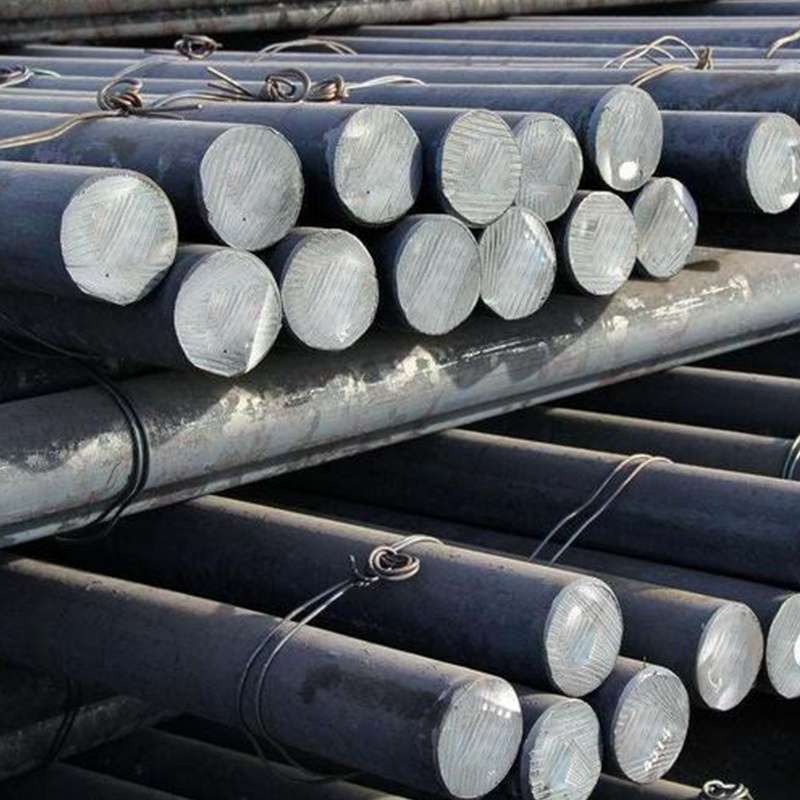
To help you choose the best heat treatment method for your specific needs, the following table compares the key characteristics and benefits of each process.
| Heat Treatment Method | Temperature Range (°C) | Método de refrigeración | Main Benefits |
|---|---|---|---|
| Recocido | 760°C – 870°C | Slow furnace cooling | Improves machinability and ductility |
| Normalización | 870°C – 925°C | Refrigeración por aire | Enhances toughness and uniformity |
| Temple y revenido | 845°C – 870°C (quenching), 400°C – 650°C (tempering) | Rapid cooling (quenching), controlled reheating (tempering) | Increases hardness and strength while reducing brittleness |
This table provides a quick reference to the different heat treatment methods and the specific benefits they bring to 1045 steel.
Conclusión
1045 steel heat treatment is essential for optimizing the performance of this versatile material in various industrial applications. Whether you need increased toughness, improved machinability, or enhanced hardness, the right heat treatment method can transform 1045 steel to meet your specific requirements. Annealing, normalizing, and quenching and tempering each offer unique advantages, so selecting the appropriate process depends on the intended use of the steel.
By carefully considering the desired properties and consulting this guide, manufacturers and engineers can maximize the performance and lifespan of 1045 steel in their applications.
PREGUNTAS FRECUENTES
What is the purpose of 1045 steel heat treatment?
1045 steel heat treatment is used to enhance the material’s properties, such as increasing hardness, tenacidad, and strength, depending on the specific application.
What are the common methods of 1045 steel heat treatment?
The most common methods of 1045 steel heat treatment are annealing, normalizing, and quenching and tempering, each offering unique benefits for various applications.
How does annealing affect 1045 steel heat treatment?
Annealing during 1045 steel heat treatment softens the steel, improves its machinability, and reduces internal stresses, making it easier to work with for manufacturing processes.
What is the difference between quenching and tempering in 1045 steel heat treatment?
Quenching rapidly cools 1045 steel to increase hardness, while tempering re-heats the steel at lower temperatures to reduce brittleness and improve toughness.
How does normalizing differ from annealing in 1045 steel heat treatment?
Normalizing in 1045 steel heat treatment involves air cooling, which refines the grain structure for better toughness, while annealing uses slow furnace cooling to enhance ductility and reduce hardness.
What temperature range is used for 1045 steel heat treatment during quenching?
During 1045 steel heat treatment, quenching is typically performed at temperatures between 845°C and 870°C to achieve maximum hardness and strength.
Can 1045 steel heat treatment improve wear resistance?
Yes, 1045 steel heat treatment, especially through quenching and tempering, significantly enhances wear resistance, making it suitable for heavy-duty applications like gears and shafts.
How does 1045 steel heat treatment affect machinability?
Heat treatments like annealing and normalizing improve the machinability of 1045 steel by reducing hardness, allowing for easier cutting, shaping, and forming.
What industries benefit from 1045 steel heat treatment?
Industries such as automotive, machinery manufacturing, and construction benefit from 1045 steel heat treatment due to the material’s enhanced strength, toughness, and wear resistance.
Why is tempering important after quenching in 1045 steel heat treatment?
Tempering is crucial in 1045 steel heat treatment to restore some toughness and ductility after quenching, reducing brittleness while maintaining the desired hardness.

